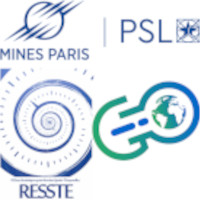Carbon dioxide anthropogenic emissions are the main driver of climate change. Current emission estimates, which are needed to guide reduction policies, rely on statistical data of energy consumption and are subject to important uncertainties.
In order to assess these emissions in an independent, timely and accurate manner, the Copernicus CoCO2 project aims to build a prototype system for a CO₂ emission monitoring service exploiting atmospheric CO₂ measurements, and in particular the XCO₂ images from the future CO2M mission. As part of this project, our goal is to build an inverse modelling system to quantify large local CO₂ sources (large urban areas and industrial sites) based on the spaceborne imagery of the CO₂ atmospheric plumes from these sources.
The quantification of such sources depends on the detection of the associated plumes in the satellite images of the CO₂ average column concentrations (XCO₂), which represents a significant challenge. Indeed, the signal of the XCO₂ plumes induced by hotspots emissions rarely exceeds values of a few ppm and its extraction is perturbed by the instrumental noise and variable regional CO₂ background signals in the images.
We explore the use of deep learning techniques to solve the problem of CO₂ plume detection and inversion. Our dataset used to train and test such techniques includes pseudo images based on simulations of hourly XCO₂ fields in the vicinity of various power plants, tracing plume emissions from anthropogenic and biogenic sources. Specifically, we employ convolutional neural networks (CNN) to analyse the CO₂ plume contour and the associated emissions in a pseudo XCO₂ image. Our findings show that the CNN model outperforms traditional plume inversion approaches such as the cross-sectional method, achieving highly accurate results with a median relative error between 15 and 30%, depending on the power plant studied. Furthermore, our estimations are only slightly affected by the absence of NO2 fields or a detection mechanism. These promising results suggest a high potential of CNNs in estimating local CO₂ emissions from satellite XCO₂ images.
- Poster

 PDF version
PDF version

